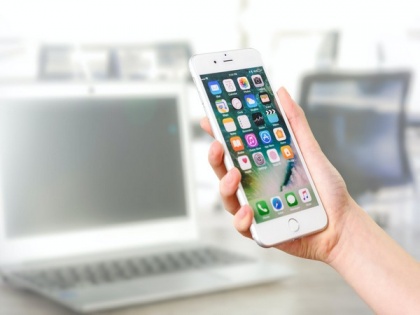Smartphone application for reading SARS-CoV-2 test results
By ANI | Published: March 6, 2021 05:11 AM2021-03-06T05:11:14+5:302021-03-06T05:20:02+5:30
Researchers report the development of a smartphone application that combines smartphone camera imaging with machine learning to interpret SARS-CoV-2 serological rapid diagnostic test (RDT) results, the visual interpretation of which can be highly subjective.

Smartphone application for reading SARS-CoV-2 test results
Researchers report the development of a smartphone application that combines smartphone camera imaging with machine learning to interpret SARS-CoV-2 serological rapid diagnostic test (RDT) results, the visual interpretation of which can be highly subjective.
The application yielded only 18 false negatives and 5 false positives out of 3,344 samples tested using 11 RDTs, suggesting that such an application could increase confidence in RDT results.
According to an article by the Proceedings of the National Academy of Sciences of the US (PNAS), "Using an app to help RDT users better confirm infection presents some strong advantages such as they learn how to perform valid tests through demonstration videos or blood sampling schematics included in the app."
The app's timer helps in timely reading, which is usually 7 to 15 minutes, reducing the possibility of the number of false positives. This helps in having a human error-free result.
"The app displays results unambiguously (positive, negative, or invalid) without interpretation, translation errors, or jargon. App location data can direct users to local health services for medical advice," the PNAS article stated.
It pointed that though the app and method would be "used with any generic RDT" but it allows only quality-controlled and locally authorised RDTs to be read.
The advantage of such an app is that the total number of positive and negative tests are updated in real-time.
Besides, the use of the app by health authorities using (fully anonymized) location data could produce live disease maps, PNAS added.
( With inputs from ANI )
Disclaimer: This post has been auto-published from an agency feed without any modifications to the text and has not been reviewed by an editor
Open in app